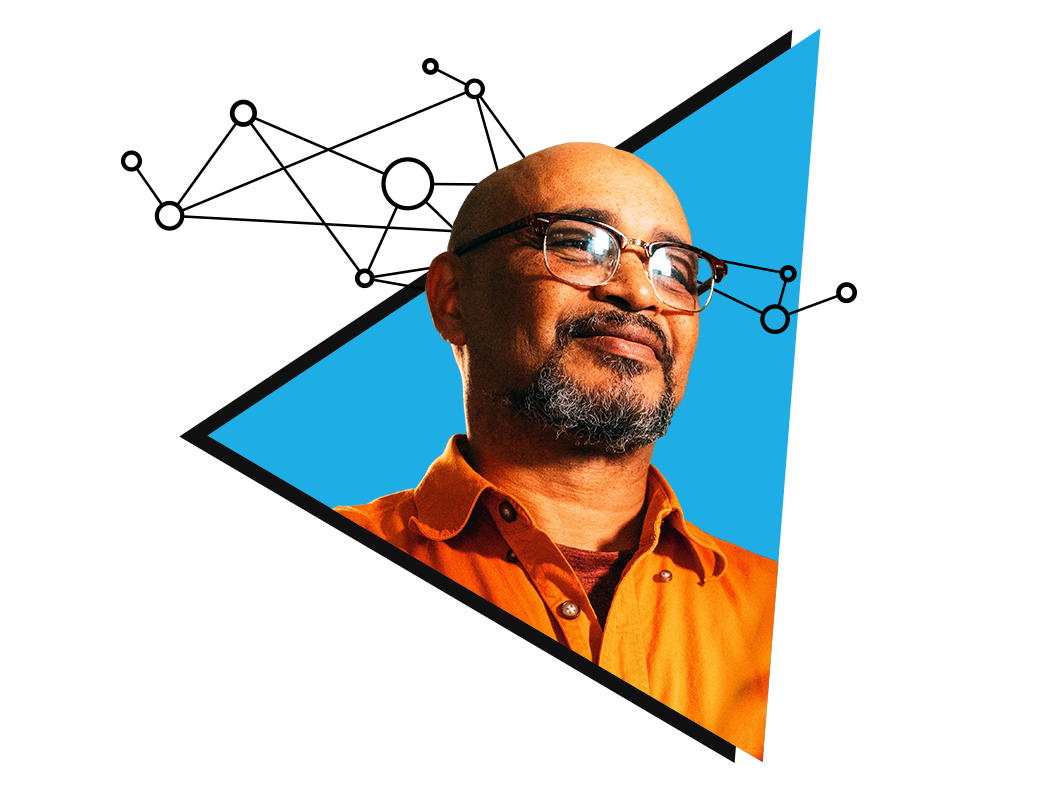Innovation and Technology
NYC Adopts T-Mobile To Unite Its Public Safety Communications

The Scale of New York City’s Emergency Response Needs
The scale of New York City’s emergency response needs is immense, with 40,000 first responders addressing challenges as diverse as building collapses, subway emergencies, and potential terrorist threats. The municipality handles approximately 9 million 911 calls annually and manages emergency services for over 1 million buildings. These responders must maintain reliable communications, whether 70 floors up in a skyscraper or seven floors below ground. Their toolkit includes not just cellphones but an array of critical equipment, including drones, chemical sensors, radiation detectors, and hardened PCs – all of which require robust network connectivity.
T-Mobile Selected as Exclusive Carrier for New York City’s Public Safety Network
During a live event in New York City, the municipality announced that it had selected T-Mobile to become the exclusive carrier for New York City’s public safety network. The partnership with New York City represents a significant departure from the city’s previous practices, where individual agencies like police and fire departments selected their wireless carriers. New York City chose T-Mobile based on network performance and financial savings, which will return over $10 million to city coffers.
CTO Shares Why NYC Selects T-Priority to Modernize Public Safety Communications
The decision to select T-Mobile as the city’s exclusive carrier marks a significant shift in New York’s approach to emergency communications. "Every agency had made decisions around which network it went to on its own," explained Matthew C Fraser, New York City Chief Technology Officer. "For the city of New York, being one of the largest municipal governments across the nation, I couldn’t understand why everyone (various departments) decided on which cell carrier they liked based on personal preference, not based on performance or financially what was in the best interest of the city."
T-Priority Network Advantages
The selection process revealed unexpected benefits beyond network capabilities. "What we found during that exercise is the network that we hadn’t looked at seriously over the last couple of years, had become one of the most significant networks, not just domestically, but globally," Fraser noted. "What’s more important than that is that we’re going to use this to provide the same discounts that we pay as a government to our city employees, bringing tens of millions of dollars back into city employees’ households. For us, it’s more than just connectivity. It’s more than just access. It’s doing things that are smart, that not just helps us, but helps the people that we serve."
T-Mobile’s T-Priority Network Slice Technology
The new service offers several key advantages over existing networks, including what T-Mobile claims is 40% more 5G capacity than competitors and speeds that are 2.5 times faster on average. A distinctive feature is T-Mobile’s network slice technology, which creates a dedicated lane on the 5G highway specifically for first responders. Imagine a crowded highway where emergency vehicles get their own express lane that’s always open – that’s essentially what network slicing does for emergency communications. Even when the network is congested with regular traffic, first responders have their own protected pathway to send and receive critical information.
T-Mobile’s Comprehensive Strategy for Disaster Response
T-Mobile’s approach to emergency preparedness extends beyond just network capacity. Jon Freier, President of T-Mobile’s U.S. Consumer Group, emphasized the company’s comprehensive strategy for disaster response. Freier detailed how T-Mobile uses sophisticated data models to predict storm impacts and pre-position critical assets before disasters strike. "Our self-organizing network adapts in real-time," he explained. "It uses real-time customer data to adjust, optimize, and strengthen coverage where it’s needed most. Imagine antennas on towers dynamically shifting and tilting, again, in real-time, to expand the reach of the network."
Starlink Satellite Services Extends T-Priority Reach
To expand coverage to previously unreachable areas, T-Mobile plans to launch T-Mobile Starlink later this year at no additional cost for first responder agencies using T-Priority plans. Starlink, a satellite network operated by SpaceX, uses a constellation of low-Earth orbit satellites to provide internet connectivity. The T-Mobile partnership will allow standard mobile phones to connect directly to these satellites for text messaging and eventually voice calls and data services. Unlike traditional satellite phones that require special bulky devices, this service will work with most modern smartphones that support T-Mobile’s network, making it a seamless solution for first responders working in remote areas.
T-Mobile’s Ecosystem of Partnerships
The company has built an ecosystem of partnerships to support its emergency response capabilities. Samsung will provide ruggedized, AI-enabled devices; Skydia will supply drones for first responder programs; and Getac will offer ruggedized laptops optimized for the T-Priority network slice. Additional partnerships include Rescue 42 for deployable solutions, 3AM Innovations for firefighter tracking, and Siyata for land mobile radio replacement technology.
Conclusion
The New York City deal, particularly notable given the city’s complex emergency response needs and massive scale, demonstrates that T-Mobile’s enhanced focus on first responders is gaining significant traction. The expansion of partnerships and features since the October announcement suggests that T-Priority is resonating with the public safety community and positioning T-Mobile as a serious contender in the emergency communications sector.
FAQs
- What are the key advantages of T-Mobile’s T-Priority network?
- 40% more 5G capacity than competitors
- Speeds that are 2.5 times faster on average
- Network slice technology for dedicated emergency response
- What is T-Mobile’s comprehensive strategy for disaster response?
- Predicting storm impacts and pre-positioning critical assets
- Using real-time customer data to adapt and optimize network coverage
- How will T-Mobile’s Starlink satellite services extend T-Priority reach?
- Providing internet connectivity to previously unreachable areas
- Allowing standard mobile phones to connect directly to satellites for text messaging, voice calls, and data services
- What partnerships has T-Mobile built to support its emergency response capabilities?
- Samsung, Skydia, Getac, Rescue 42, 3AM Innovations, and Siyata
Innovation and Technology
The Rise of Tech-Savvy Social Enterprises: Disrupting the Status Quo

What are Tech-Savvy Social Enterprises?
Tech-savvy social enterprises are organizations that utilize technology to drive social impact and create positive change. These enterprises leverage technology to develop innovative solutions to complex social problems, such as poverty, inequality, and environmental degradation. By using technology, social enterprises are able to reach more people, increase efficiency, and create sustainable solutions.
Key Characteristics of Tech-Savvy Social Enterprises
Tech-savvy social enterprises have several key characteristics that set them apart from traditional social enterprises. These characteristics include a strong focus on technology, a commitment to innovation, and a willingness to take risks. Additionally, tech-savvy social enterprises are often driven by a desire to create systemic change and address the root causes of social problems.
The Impact of Tech-Savvy Social Enterprises
The impact of tech-savvy social enterprises is significant, and can be seen in a variety of areas. For example, tech-savvy social enterprises are creating innovative solutions to address issues such as access to healthcare, education, and financial inclusion. By leveraging technology, these enterprises are able to reach more people, increase efficiency, and create sustainable solutions.
Examples of Tech-Savvy Social Enterprises
There are many examples of tech-savvy social enterprises that are creating positive impact. For instance, organizations such as Coursera and edX are using online learning platforms to increase access to education. Similarly, companies such as M-Pesa and Paytm are using mobile payments to increase financial inclusion. These enterprises are just a few examples of the many organizations that are using technology to drive social change.
Benefits of Tech-Savvy Social Enterprises
The benefits of tech-savvy social enterprises are numerous. For example, these enterprises are able to increase efficiency, reduce costs, and create sustainable solutions. Additionally, tech-savvy social enterprises are able to reach more people and create a greater impact than traditional social enterprises.
Increased Efficiency
One of the key benefits of tech-savvy social enterprises is increased efficiency. By leveraging technology, these enterprises are able to automate processes, streamline operations, and reduce waste. This increased efficiency enables tech-savvy social enterprises to focus on high-impact activities and create a greater impact.
Reduced Costs
Another benefit of tech-savvy social enterprises is reduced costs. By leveraging technology, these enterprises are able to reduce operational costs, minimize waste, and optimize resources. This reduction in costs enables tech-savvy social enterprises to allocate more resources to high-impact activities and create a greater impact.
Challenges Facing Tech-Savvy Social Enterprises
Despite the many benefits of tech-savvy social enterprises, there are also several challenges that these organizations face. For example, tech-savvy social enterprises often struggle to access funding, talent, and technology. Additionally, these enterprises must navigate complex regulatory environments and address issues related to data privacy and security.
Access to Funding
One of the key challenges facing tech-savvy social enterprises is access to funding. These enterprises often struggle to secure funding from traditional sources, such as grants and donations. As a result, tech-savvy social enterprises must be creative in their fundraising efforts and explore alternative sources of funding, such as impact investing and social entrepreneurship competitions.
Access to Talent
Another challenge facing tech-savvy social enterprises is access to talent. These enterprises often struggle to attract and retain top talent, particularly in areas such as software development and data science. As a result, tech-savvy social enterprises must be strategic in their recruitment efforts and offer competitive salaries and benefits to attract top talent.
Conclusion
In conclusion, the rise of tech-savvy social enterprises is revolutionizing the way we approach social entrepreneurship. By leveraging technology to drive positive impact, these innovative organizations are creating a new era of social change. While there are challenges facing tech-savvy social enterprises, the benefits of these organizations are clear. As the social entrepreneurship sector continues to evolve, it is likely that tech-savvy social enterprises will play an increasingly important role in creating positive impact and driving social change.
Frequently Asked Questions
What is a tech-savvy social enterprise?
A tech-savvy social enterprise is an organization that utilizes technology to drive social impact and create positive change.
What are the benefits of tech-savvy social enterprises?
The benefits of tech-savvy social enterprises include increased efficiency, reduced costs, and the ability to create sustainable solutions.
What are some examples of tech-savvy social enterprises?
Examples of tech-savvy social enterprises include organizations such as Coursera, edX, M-Pesa, and Paytm.
What challenges do tech-savvy social enterprises face?
Tech-savvy social enterprises face challenges such as access to funding, talent, and technology, as well as complex regulatory environments and issues related to data privacy and security.
How can I get involved with tech-savvy social enterprises?
You can get involved with tech-savvy social enterprises by donating, volunteering, or working with these organizations. Additionally, you can support tech-savvy social enterprises by spreading the word about their work and advocating for their cause.
Innovation and Technology
Debunking AI Agent Myths

Introduction to AI Agents
The latest buzz of excitement in the world of business and consumer technology is all around AI agents. These can be thought of as the next leap forward in the field of generative AI, which gave us ChatGPT and other large-language-model chatbots. Rather than simply answering questions or generating information, they can take action on our behalf, interfacing with other tools and services to complete complex tasks.
Understanding AI Agents
The technology hasn’t quite reached the watershed moment where it has broken through into the mainstream yet, as happened with LLM chatbots a couple of years back when ChatGPT was released. But make no mistake, it’s on its way, and its impact is going to be huge, as we increasingly turn to AI assistants to help us out in all aspects of life.
Common Myths About AI Agents
There’s still a lot of confusion around the subject, though. So let’s clear up five myths around the topic of agentic AI.
Myth 1: Agents Are Basically Just Better Chatbots
Agents have one fundamental quality that sets them apart from and above chatbots; they don’t just talk the talk, they walk the walk. This means they can take action, specifically computer-based actions like interacting with websites, digital services and software. When you think about how many of life’s tasks we handle in that way, that’s potentially quite a lot of work they can take off our hands.
Myth 2: Agents Can Only Carry Out A Limited Number Of Tasks
It’s true that in these early days, the first agentic consumer-facing tools, like OpenAI Operator, were a little limited. In theory, though, AI agents will eventually be capable of taking care of just about any task we usually use a smartphone for. This could include managing our schedules, shopping for groceries, making travel arrangements, arranging appointments for services like healthcare or car maintenance, booking taxis, managing our bank accounts, and countless other things.
Myth 3: AI Agents Can’t Be Fooled Or Manipulated
You might think that it would be difficult to pull a fast one on super-smart agentic AI, but this isn’t necessarily proving to be the case. At least one study has found that agents using computer vision to search the web for deals can be tricked into clicking specific links or pop-up ads by making it appear they have the info the AI is looking for.
Myth 4: Agentic AI Is The Same As AGI
With all the terminology around AI, it’s often easy to get confused. Agentic AI and artificial general intelligence (AGI) are two topics that are often muddled together, but actually refer to different, if related, concepts. AGI refers to machine intelligence that’s able to “generalize” its knowledge and capabilities, in order to solve any problem, rather than just the type of problems it has been trained to solve (much like humans can).
Myth 5: AI Agents Can Work Without Human Input Or Supervision
Agentic AI is often described as autonomous because, in theory, it’s capable of working without human input or supervision. In practice, though, this isn’t a good idea. Remember, AI agents are tools. They can take action on our behalf, but we’re always responsible for the results.
Conclusion
By understanding that AI agents are more than next-gen chatbots, that their utility is set to grow massively, and that human oversight is non-negotiable, and ethical standards are the responsibility of us all, we can make sure we’re ready to benefit from the incoming wave of change they will bring.
FAQs
Q: What are AI agents?
A: AI agents are the next leap forward in the field of generative AI, capable of taking autonomous actions on our behalf.
Q: How do AI agents differ from chatbots?
A: AI agents can take action, specifically computer-based actions, whereas chatbots can only provide information or answers to questions.
Q: Can AI agents be fooled or manipulated?
A: Yes, AI agents can be tricked into clicking specific links or pop-up ads by making it appear they have the info the AI is looking for.
Q: Is agentic AI the same as AGI?
A: No, agentic AI and artificial general intelligence (AGI) are two different concepts, although related.
Q: Do AI agents require human input or supervision?
A: Yes, human oversight and accountability are critical elements of any agentic framework.
Innovation and Technology
The Microservices Debate Is Damaging Your Business

In the red corner, weighing in with independent scalability and distributed complexity: microservices! In the blue corner, the reigning legacy champion, with its infamous deployment challenges: the monolith! For years, architects and technology executives have watched this architectural cage match with bated breath. Technology forums buzzed with trash talk from both sides. Conference speakers built careers championing one approach while demonizing the other. Vendors sold middleware solutions promising to crown you champion — if only you’d pick their preferred fighter.
The Reality of the Debate
But what if we told you that this entire spectacle was all just a waste of time? The truth? Your organization shouldn’t pick a single winner in this so-called battle. You need different solutions tailored to specific contexts. The industry landscape is littered with both cautionary tales and success stories that illustrate architectural tension. Consider how Segment, the customer data platform, famously documented its journey from monolith to microservices and then partially back again. The engineering team initially split Segment’s platform into over 100 microservices in pursuit of scalability, only to face what they called “death by a thousand microservices.” The team eventually consolidated back to a more balanced approach after experiencing mounting operational complexity and debugging challenges that outweighed the benefits.
Real-World Examples
On the flip side, many established enterprises cling to aging monoliths long past their expiration dates. When retail giant Target began its digital transformation, it realized that its monolithic architecture couldn’t deliver the agility needed to compete with Amazon. Its pragmatic phased approach to modernization — selectively decomposing components while maintaining core systems — helped Target achieve an impressive digital turnaround without falling into either extreme of the architectural spectrum. The lesson from both scenarios? Architectural decisions driven by trends rather than business context frequently lead organizations astray. Architecture is about weighing trade-offs, not adhering to dogma.
Principles for Practical Architecture Decisions
Dropping the gloves and focusing on practicality, there are three key principles to consider:
- Respect context over dogma. The most successful organizations approach architecture as a spectrum of options, not a binary choice. They understand that different components of their system have different needs. Features that change frequently might benefit from isolation and independent deployment, while stable functions might remain tightly integrated.
- Evolve incrementally, not revolutionarily. Revolutionary architectural changes make for exciting conference talks but disastrous implementation stories. Progressive, measurable evolution toward targeted outcomes consistently outperforms “big bang” transformations. The best architectures grow organically to address specific pain points, not theoretical ideals.
- Measure what matters to the business. The ultimate victor in any architectural decision should be determined by measurable business outcomes, not technical elegance. Does the change increase deployment frequency? Reduce time-to-market? Improve reliability? Lower operational costs? Architecture should serve the business, not the other way around.
The Real Champion: Architectural Pragmatism
As we enter a new era of digital acceleration, the organizations pulling ahead aren’t arguing about monoliths versus microservices. They’re pragmatically applying architectural patterns where they make sense, modernizing incrementally where they see concrete benefits, and staying focused on delivering business value. So go beyond the battle royale, put down the architectural dogma, and start asking better questions about what your specific context, organization, and business needs demand. The true champion of modern software architecture isn’t a particular pattern — it’s the pragmatic, business-focused approach that delivers real results in your unique context. Because in the real world, the only architectural approach fighter that truly wins is the one that helps your business succeed.
Conclusion
The debate between microservices and monoliths has been a long-standing one, with each side having its own set of advantages and disadvantages. However, the key to success lies not in choosing one over the other, but in adopting a pragmatic approach that considers the specific needs and context of the organization. By respecting context over dogma, evolving incrementally, and measuring what matters to the business, organizations can make informed architectural decisions that drive real results.
FAQs
- Q: What is the main argument of the article?
A: The article argues that the debate between microservices and monoliths is not about choosing one over the other, but about adopting a pragmatic approach that considers the specific needs and context of the organization. - Q: What are the three principles for practical architecture decisions?
A: The three principles are: respect context over dogma, evolve incrementally, and measure what matters to the business. - Q: What is the example of Segment’s journey from monolith to microservices?
A: Segment initially split its platform into over 100 microservices but eventually consolidated back to a more balanced approach due to operational complexity and debugging challenges. - Q: What is the conclusion of the article?
A: The conclusion is that the key to success lies not in choosing microservices or monoliths, but in adopting a pragmatic approach that considers the specific needs and context of the organization.
-

 Career Advice5 months ago
Career Advice5 months agoInterview with Dr. Kristy K. Taylor, WORxK Global News Magazine Founder
-

 Diversity and Inclusion (DEIA)5 months ago
Diversity and Inclusion (DEIA)5 months agoSarah Herrlinger Talks AirPods Pro Hearing Aid
-

 Career Advice5 months ago
Career Advice5 months agoNetWork Your Way to Success: Top Tips for Maximizing Your Professional Network
-

 Changemaker Interviews4 months ago
Changemaker Interviews4 months agoUnlocking Human Potential: Kim Groshek’s Journey to Transforming Leadership and Stress Resilience
-

 Diversity and Inclusion (DEIA)5 months ago
Diversity and Inclusion (DEIA)5 months agoThe Power of Belonging: Why Feeling Accepted Matters in the Workplace
-

 Global Trends and Politics5 months ago
Global Trends and Politics5 months agoHealth-care stocks fall after Warren PBM bill, Brian Thompson shooting
-

 Global Trends and Politics5 months ago
Global Trends and Politics5 months agoUnionization Goes Mainstream: How the Changing Workforce is Driving Demand for Collective Bargaining
-

 Training and Development5 months ago
Training and Development5 months agoLevel Up: How Upskilling Can Help You Stay Ahead of the Curve in a Rapidly Changing Industry



















